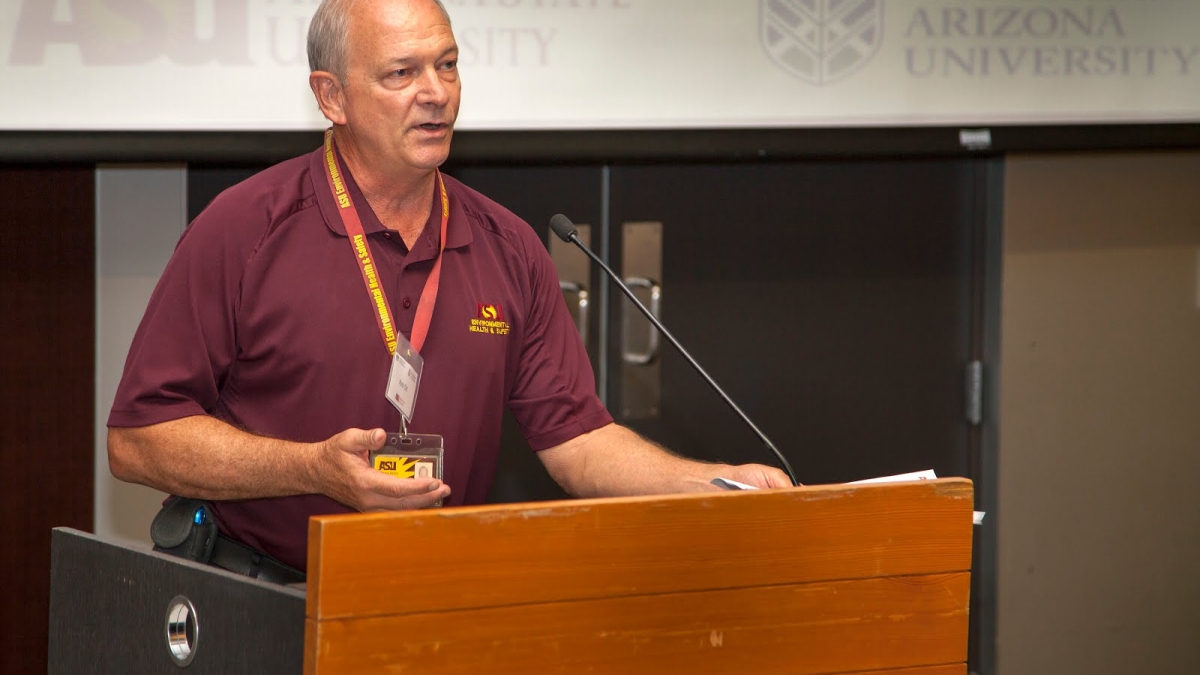ASU hosts lab safety panel for state universities

Arizona State University hosted the Arizona Board of Regents’ Tri-University Laboratory Safety Culture Conference on Sept. 27. Representatives from the three state public universities joined members from community colleges and state agencies to discuss how to successfully promote safe, department-wide laboratory practices.
The conference – the first since 2010 – addressed a fatal incident that occurred in 2009 involving a 23-year-old research assistant at the University of California, Los Angeles. The nature of this event caused many members of university scientific communities to reemphasize the importance of laboratory safety not only as an individual responsibility, but also as a cultural imperative.
Armando Durazo was a laboratory safety officer at UCLA in 2009, and now is a research specialist at the University of Arizona. He spoke about his experience during the fatal incident, and how the university handled the event as a teaching moment.
“When I teach about safety, I mention this accident,” Durazo said. “I try to use what happened there and the university’s response as a means to teach and get people to take safety measures willingly to prevent something like that from happening.”
Durazo said that the UCLA safety committee reiterated to all its students, faculty and staff about the basic, yet fundamental measures to take while in laboratories:
• Wear fire-resistant coats
• Use proper eye protection
• Prohibit shorts and sandals
Regular and surprise laboratory inspections also were mentioned as important changes to UCLA’s safety protocol.
To ensure safe laboratory environments at ASU, the university uses the laboratory safety mandates compiled by the American Chemical Society. Michael Caplan, associate professor in the School of Biological and Health Systems Engineering, explained that to him and his committee, laboratory safety is a collaborative process within each unit or group of researchers.
“The basic idea is that by having these unit-level safety committees you have safety by faculty, staff and students and safety for faculty, staff and students,” Caplan said. “It’s the idea that if you get the people who are responsible for safety being the same people who need to be safe, then that’s where you build culture.”
Pedro Silva, Pedro.Silva.1@asu.edu
480.965.8777
ASU Business and Finance